Spacecover
The purpose of the gamified application is to provide the user with knowledge about space by having them play mini-games such as quizzes and puzzles.
The sketches
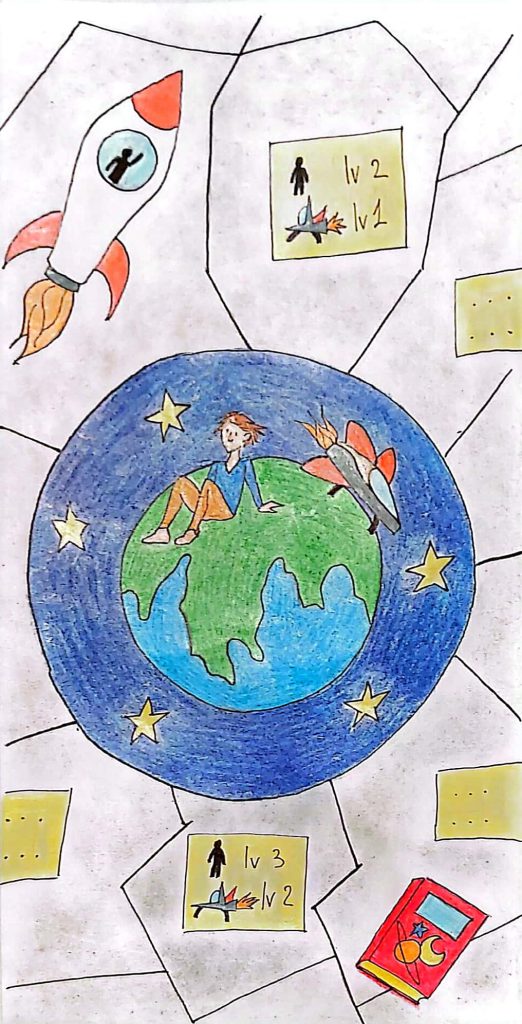
The player starts from the celestial vault screen (sketch on the left), where they can see their progress in the game: the colored areas represent already unlocked levels, and the further one gets from home, the closer they approach the boundaries of space and more difficult levels with less familiar topics. The player is allowed to tackle challenges in the colored areas. To unlock the gray areas, the player must first meet the necessary requirements, which means leveling up.
To level up, the player must earn spacecoins by winning challenges (sketch on the right), which they can use to purchase equipment for their spaceship and spacesuit to make both stronger. The types of rewards that can be obtained are not just spacecoins but also free equipment if the player is lucky enough or cosmic pills, which are mini lessons about celestial bodies.
The size of the explored celestial vault as well as the player’s equipment indicate their progress and the skills they have gained while playing the game. Additionally, the player can track their progress not only through the celestial vault or obtained levels but also by checking how many cosmic pills they have collected, as these are collectible. Rare equipment also serves as badges, rewarding the player for having overcome a tough challenge.
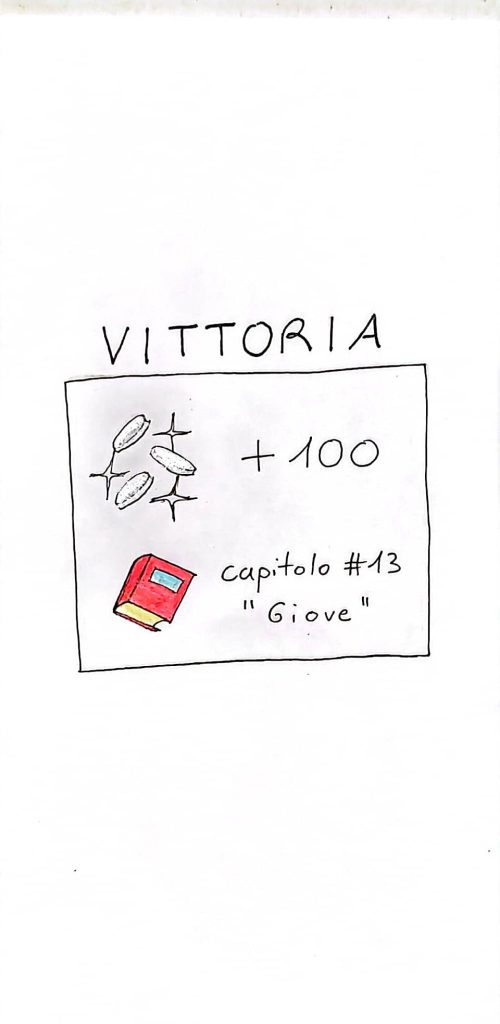
In the project, three types of quizzes were proposed (sketches below), although our original goal was to come up with more. One quiz pairs the name of the constellation with its shape, another asks the user to draw the constellation, and the last one asks the user to reorder the constellations by reconstructing the night sky.
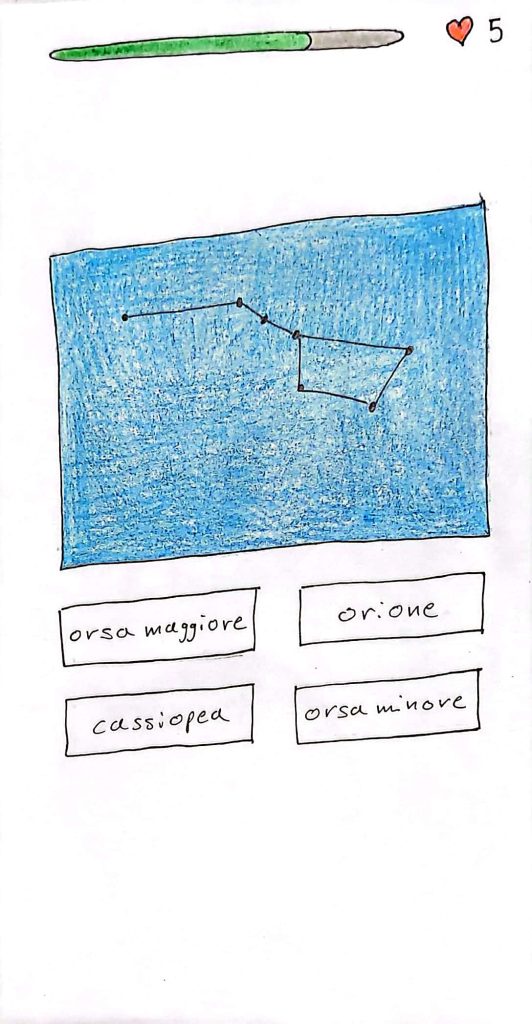
“Match the constellation to its name”
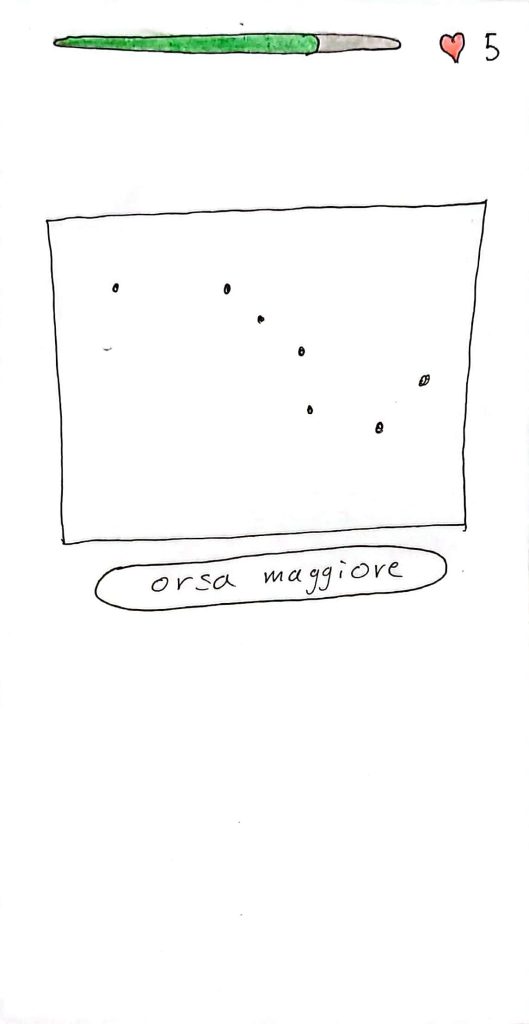
“Draw the constellation”
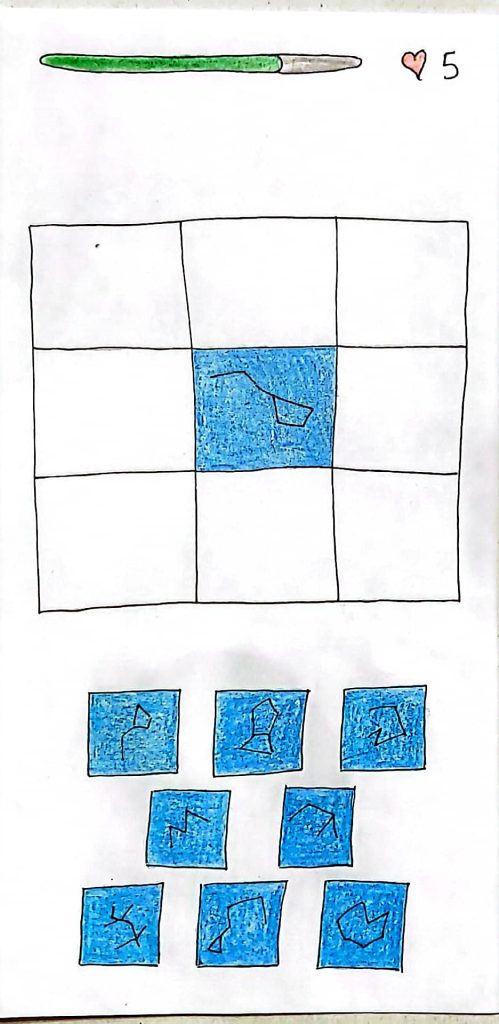
“Reassemble the celestial sphere”
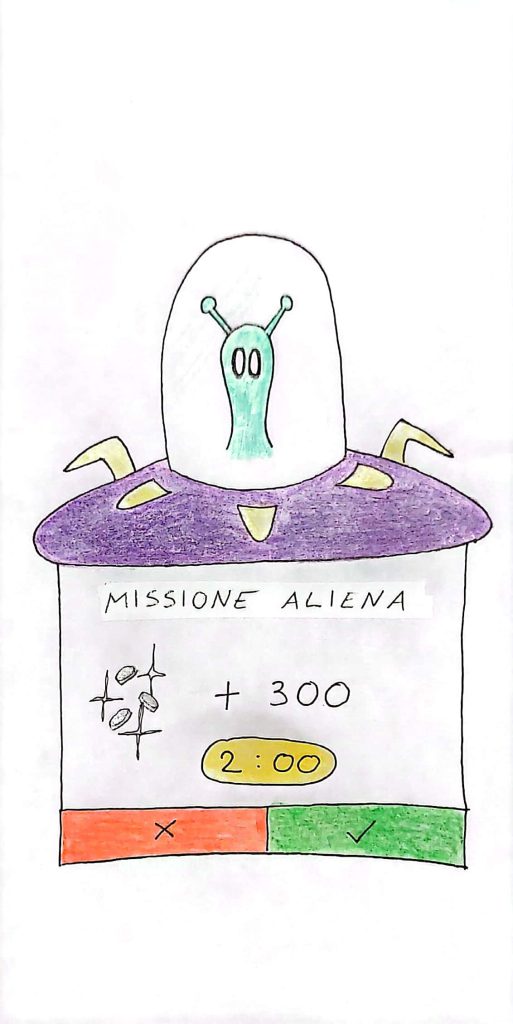
In the game, there are additional challenges for more experienced players, offering rich rewards such as a high number of spacecoins or rare equipment.
The Alien Challenge (sketch on the left) is a timed quiz that includes review questions from the more basic quizzes, as well as questions related to the content of the cosmic pills. These challenges are random and not mandatory.
The Duo Missions (sketch on the right) involve a difficult goal to achieve, but players are allowed to be helped by a friend. To find someone willing to assist in organizing a duo mission, simply click on the support rocket in the celestial sphere screen.
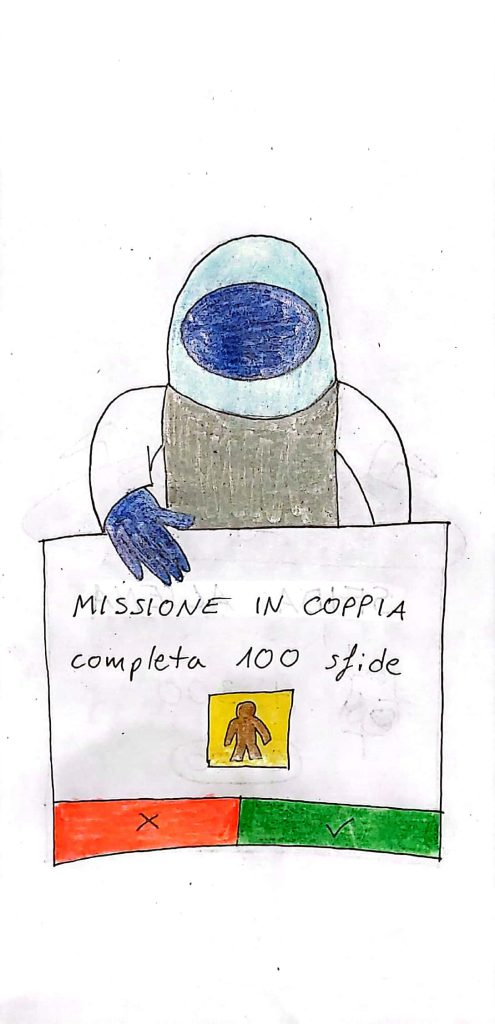
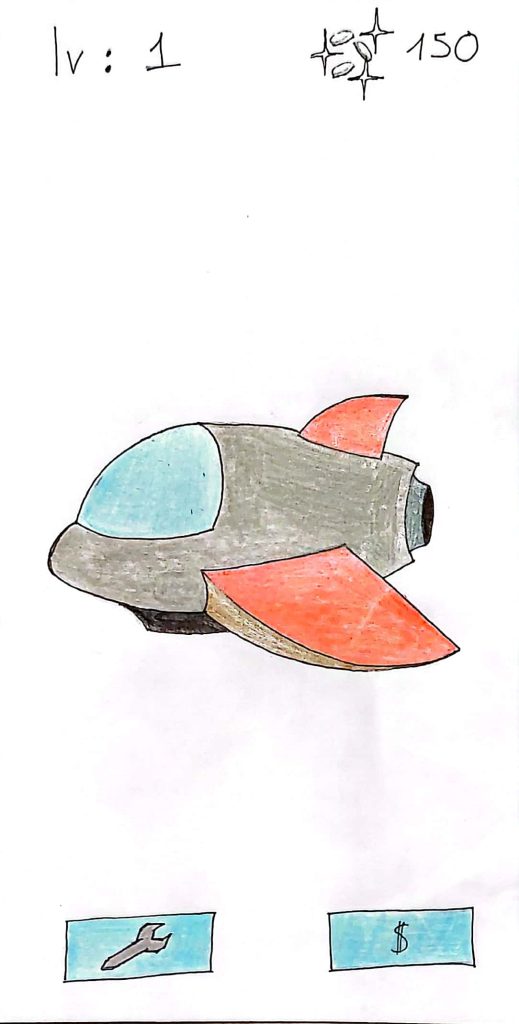
The player’s progression is tied to a simple background story: the player starts their journey from home but cannot reach distant destinations just yet because they must first build a sturdy spaceship and dress appropriately. To do this, they need to study, pass tests, and earn enough spacecoins to buy equipment from the shops (sketch on the left and right).
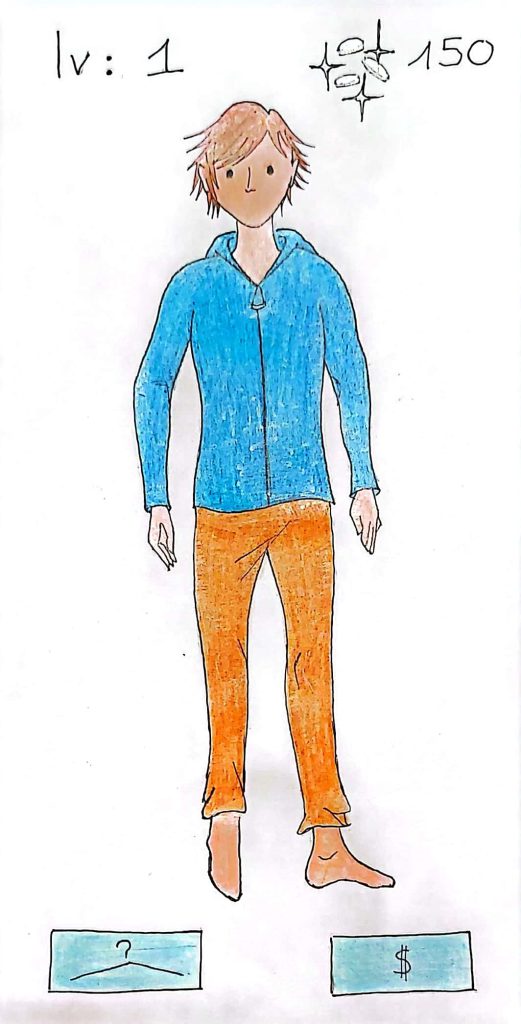
The resources
The process
Theme selection
After a brainstorming phase, we ultimately decided to use gamification in the context of learning, with a theme focused on astronomy and space.
Concept creation
Next, we created the quizzes and attached a player progression system, indicated by the expansion of the explored celestial sphere and the enhancement of the spacesuit and spaceship.
Balancing game elements
Once the concept was completed, we made sure that the game created motivation for the player, specifically verifying the balance between intrinsic and extrinsic motivation using the Octalysis framework.
Presentation with sketches
Due to time constraints, a prototype was not created, but the game was presented with a set of sketches and a report outlining the game rules and its description.